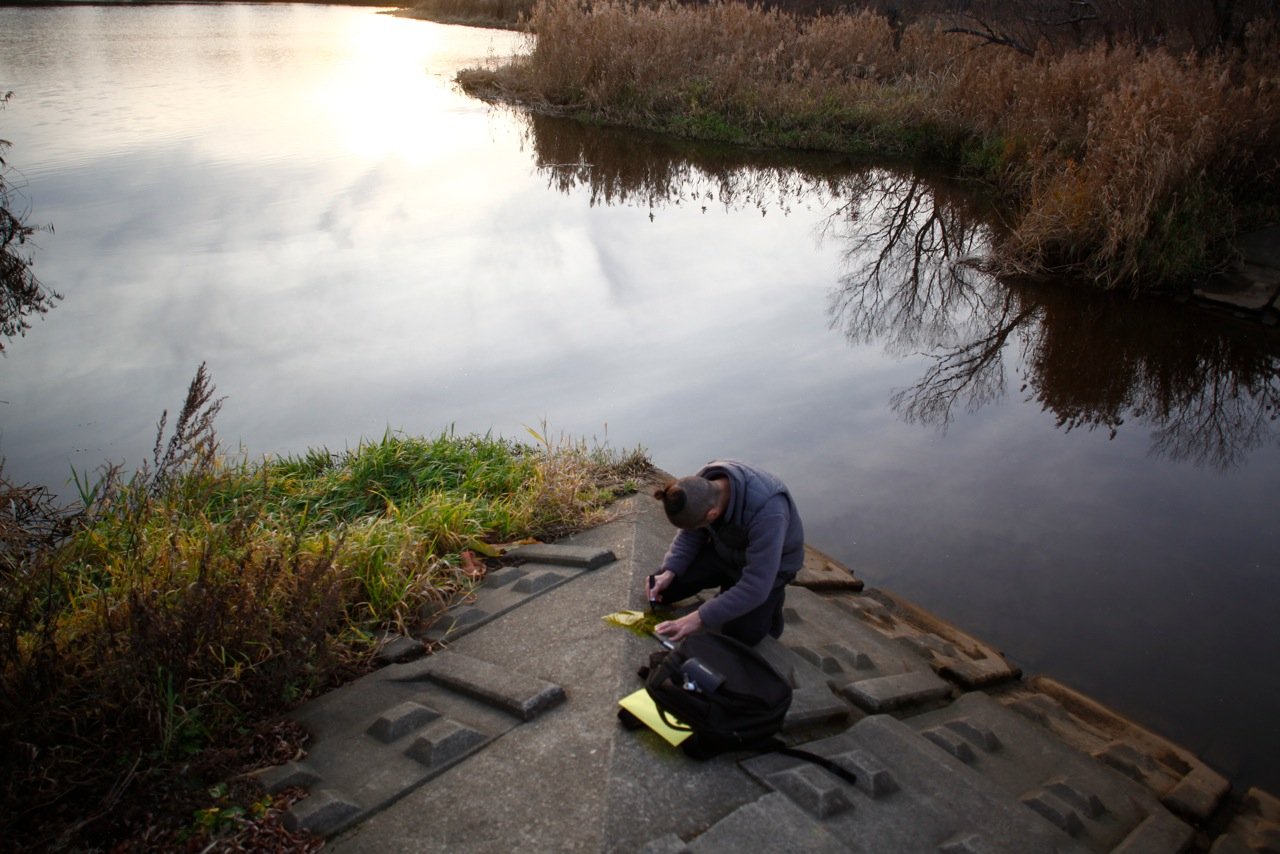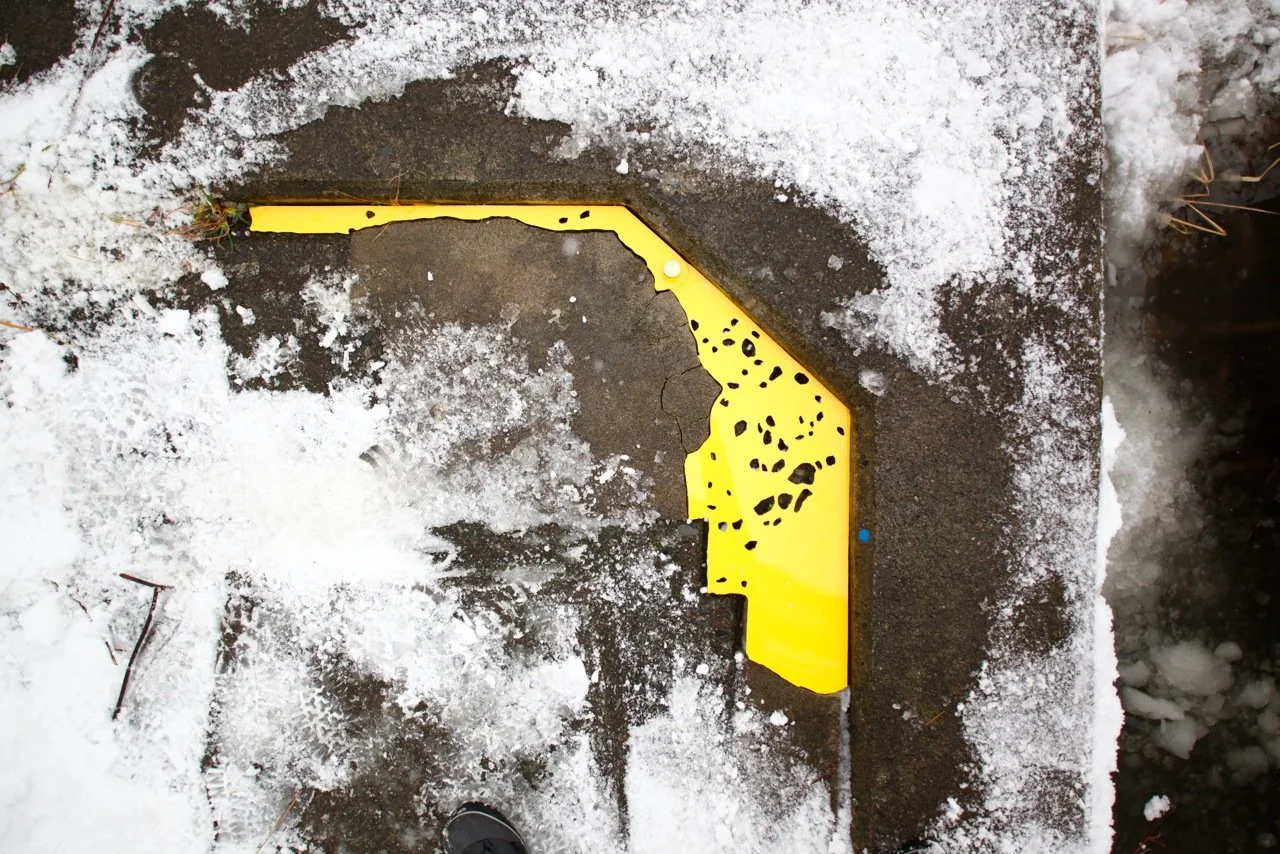
谷口顕一郎/Kenichiro Taniguchi
プロフィール
谷口 顕一郎(1976年/札幌生まれ)
札幌とドイツ・ベルリンを拠点に活動する彫刻家。
自然と人間の境に見つけた痕跡を「凹み」と呼び、世界各地で収集・アーカイブすることをライフワークとしている。その凹みの形に、折りたたむ、回転させる、ねじるなどの動きを加え、3次元の可動彫刻を制作している。札幌市民交流プラザ(2018)やオランダ司法省新築ビル(2012)等にて公共彫刻の設置を手がける。第1回本郷新記念札幌彫刻賞受賞(2015)。ポロック=クラズナー財団(2017)や日本文化庁新進芸術家海外派遣制度(2008-2010)の研修員。主な展覧会に、アムステルダム国立美術館、ロッテルダム美術館、A4美術館(中国・成都)、テジョン美術館(韓国・大田)、コーダ美術館(オランダ・アペルドールン)などがある。
Taniguchi Ken’ichiro (Born 1976, Sapporo)
Taniguchi Ken’ichiro is a sculptor based in Sapporo and Berlin. His practice and lifework encompasses collecting and archiving hecomi, or the traces found between nature and man, from around the world. He creates three dimensional moveable sculptures by folding, rotating, and twisting these hecomi shapes. He has created public sculptures for the Sapporo Community Plaza (2018) and the CJIB - Dutch Ministry of Justice building (Leeuwarden, the Netherlands). He is a recipient of the 1st Hongo Shin Memorial Sculpture Award (2015), as well as fellowships from the Pollock-Krasner Foundation (2017) and the Japanese Agency for Cultural Affairs Program of Overseas Study for Upcoming Artists (2008-2010). His work has been exhibited at the Rijksmuseum Amsterdam, Museum Rotterdam, A4 Museum (Chengdu, China), Daejeon Museum of Art (Daejeon, South Korea), and CODA Museum (Apeldoorn, the Netherlands).
ステートメント
日本語で、物理的には物の表面がくぼむ、精神的には落ち込むことを表す「Heko-mu」という動詞から、路面や壁面などの人工物上に自然の力が作用して生まれたひび、剥離、破損箇所などを「Hecomi」と定義し、2000年より作品のモチーフにしている。古い、汚いといった負のイメージがある凹みも、絵画的に形だけを抽出してみると、斬新さ、愛嬌、力強さ、物悲しさなど、多様で魅力的なキャラクターを持ってる。いたるところにあるそれらの中から気に入ったものを、これまでに世界45カ国で約500個を採取、形のストックとしてアーカイブしてきた。
この凹みの形を華やかな黄色のPVC板で切り出し、元の凹みにカチリとはめ込む行為「凹みフィッティング」は、ネガティブだった存在を、ポップでポジティブな生きた存在へと価値転換する瞬間である。(※リサイクル素材の高圧縮硬化PVCプレートを使用)この儀式を通し、自然が生んだ形に敬意を表すことで、初めて、自身の造形に取り組む次のステージへ進める気がしている。
このオブジェクトを複数のパーツに分け、再び蝶番でつなぐことで、各箇所を折り畳んだり、開いたりすることが可能になり、それにより最適なかたちを探っていく。平面を畳むことで立体となった抽象的な可動彫刻(凹みスタディシリーズ)は、私にとって凹みのかたちを考え、そのうえ何度も変身させることができる「玩具」のような存在でもある。
近年では、地上を俯瞰し、そこに表れる街のかたちを作品にする「シティスタディシリーズ」により、凹みと街、ミクロとマクロを行き来する視点のダイナミズムを制作に取り入れている。
The Japanese verb “heko-mu” describes the physical indentation of an object’s surface, or the feeling of being emotionally depressed. I have used the cracks, fissures, and damages created by nature on roads, walls, and other man-made surfaces as motifs in my work since 2000, referring to these traces as “hecomi.” Although hecomi are often seen in a negative light as old or dirty, when their pure forms are extracted pictorially, they reveal a multitude of attractive characteristics such as novelty, charm, strength, and sadness. I have collected around 500 of my favorite hecomi from forty-five countries around the world and archived them as stock shapes.
In Hecomi Fitting, I cut out the shapes of the hecomi from bright yellow PVC plates made from recycled materials and snap them back into the existing cracks. In that moment, the negative lack of the hecomi is transformed into a lively, pop, and positive presence. After paying homage to the form of the hecomi through this ritual of fitting the shapes into the cracks, I can finally move on to the next stage of working on my sculptures.
I split the objects into multiple parts and re-connect them with hinges, folding and opening the shapes in search of the best form. These abstract moveable sculptures, titled Hecomi Studies, become three-dimensional through the act of folding flat planes. They function like toys for me, allowing me to think about the shapes of the hecomi and transform them over and over again.
In recent years, I have been studying cities from an aerial perspective in City Study Series, creating works that explore the dynamism of oscillating viewpoints: the micro and macro, the hecomi and the city.
翻訳:Art Translators Collective(内山もにか/田村かのこ)
※本プロフィールテキストは、発展助成採択者を対象とした英訳プログラムにて制作したテキストです。

